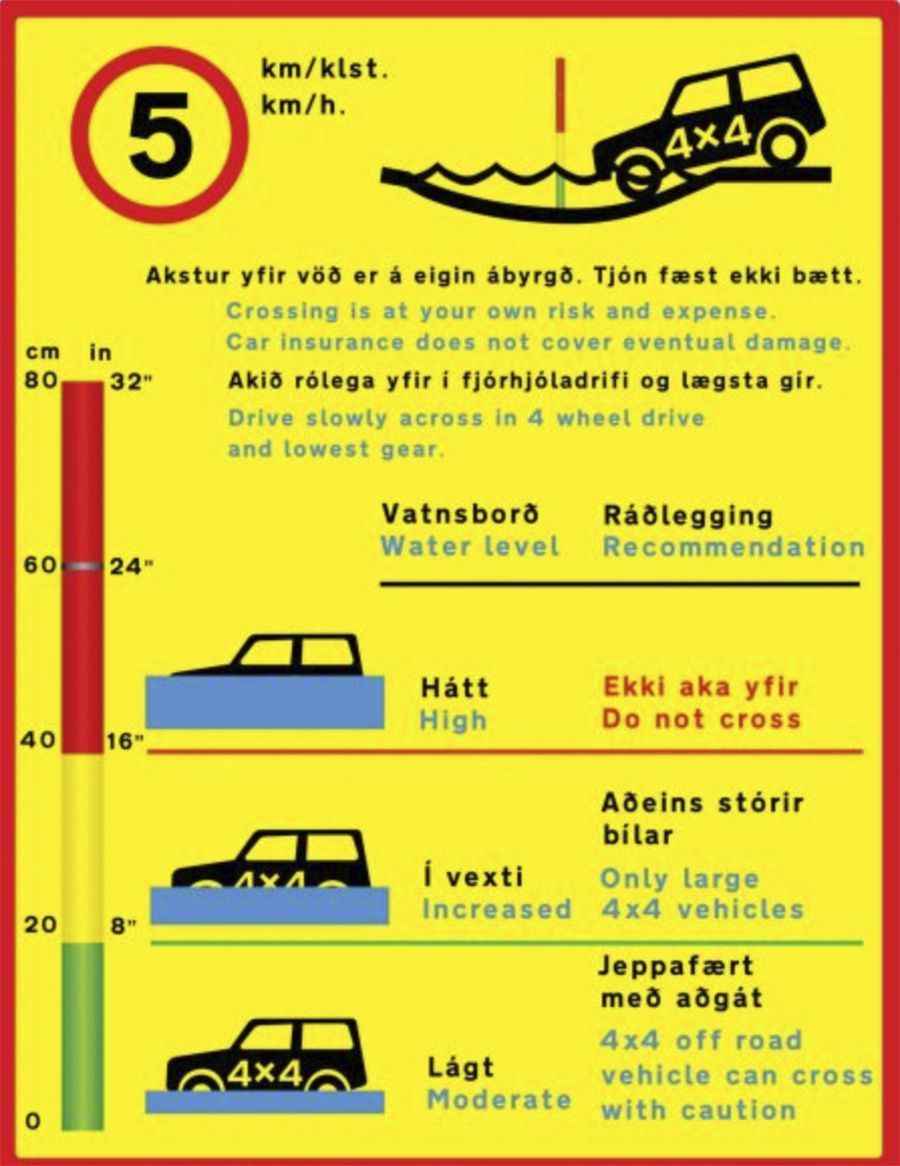How to Cross Rivers in Iceland with a 4x4
If you're planning to drive in Iceland and want to explore the highlands, the F-roads are the way in. These are rough mountain tracks, often unpaved and remote. Many involve river crossings. They're only open in summer and only accessible by 4x4 vehicles. Regular cars are not allowed and not insured on these routes.

How should you prepare for river crossings?
Crossing rivers is one of the riskiest parts of driving in Iceland. You need a proper 4x4 with high clearance. You need experience and a basic understanding of river fording. Before entering any river, stop the car, get out, and inspect the crossing. Never drive in unless you're fully sure. If you’re in doubt, turn around.
How can you assess if a river is safe to cross?
Check the water depth, speed, and the riverbed. Walk into the river if it’s safe to do so. If the water goes above your knees, don't cross. Avoid crossing where the water looks calm—it’s usually deeper. Look for shallower, wider sections with ripples. If another vehicle crosses, watch and learn. Follow marked fording points when they exist.
When is it too risky to cross a river?
Do not cross during or after heavy rain or rapid glacier melt. Water levels can change hourly. Rivers that were safe in the morning might be too deep in the afternoon. If you're alone or visibility is poor, avoid taking risks. Never cross glacial rivers without a guide or expert advice. Always check the weather forecast and road conditions before driving.

How should you drive through a river?
Use low gear and enter slowly. Keep a steady speed of about 5 km/h. Never shift gears mid-crossing. Always go slightly downstream to follow the current, not against it. Don’t stop in the middle. Drive in a straight line unless you're following a visible track. If the engine stalls, don’t try to restart it—water may have entered the air intake.
What if something goes wrong?
If you get stuck, call 112. Try not to travel alone. Having a second vehicle is safer in case you need help. Some rivers are remote and have no cell service, so inform someone about your route in advance. Always carry warm clothing, food, water, and a basic emergency kit.
Image credit: Depositphotos